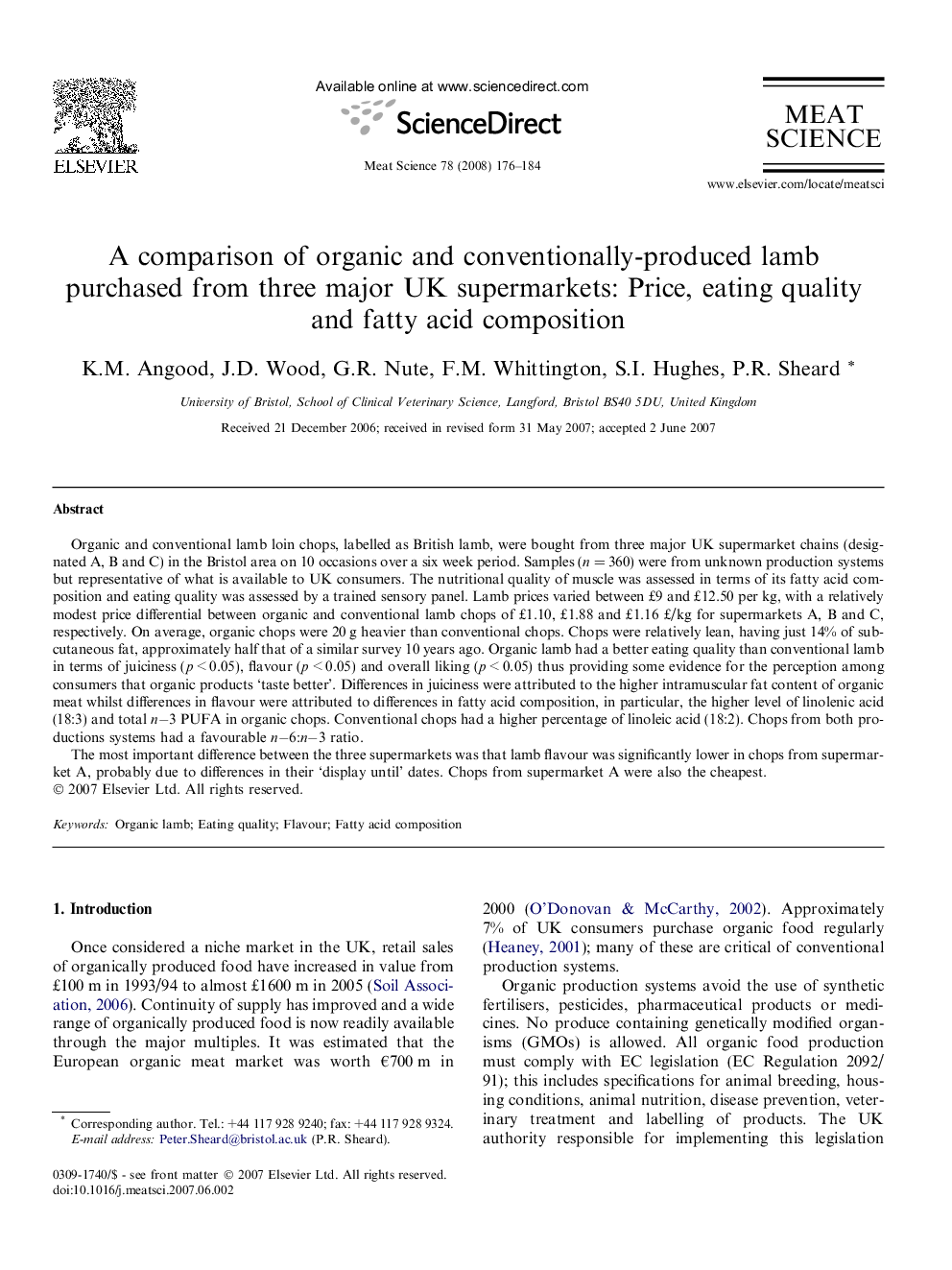| کد مقاله | کد نشریه | سال انتشار | مقاله انگلیسی | نسخه تمام متن |
|---|---|---|---|---|
| 2451719 | 1109692 | 2008 | 9 صفحه PDF | دانلود رایگان |

Organic and conventional lamb loin chops, labelled as British lamb, were bought from three major UK supermarket chains (designated A, B and C) in the Bristol area on 10 occasions over a six week period. Samples (n = 360) were from unknown production systems but representative of what is available to UK consumers. The nutritional quality of muscle was assessed in terms of its fatty acid composition and eating quality was assessed by a trained sensory panel. Lamb prices varied between £9 and £12.50 per kg, with a relatively modest price differential between organic and conventional lamb chops of £1.10, £1.88 and £1.16 £/kg for supermarkets A, B and C, respectively. On average, organic chops were 20 g heavier than conventional chops. Chops were relatively lean, having just 14% of subcutaneous fat, approximately half that of a similar survey 10 years ago. Organic lamb had a better eating quality than conventional lamb in terms of juiciness (p < 0.05), flavour (p < 0.05) and overall liking (p < 0.05) thus providing some evidence for the perception among consumers that organic products ‘taste better’. Differences in juiciness were attributed to the higher intramuscular fat content of organic meat whilst differences in flavour were attributed to differences in fatty acid composition, in particular, the higher level of linolenic acid (18:3) and total n−3 PUFA in organic chops. Conventional chops had a higher percentage of linoleic acid (18:2). Chops from both productions systems had a favourable n−6:n−3 ratio.The most important difference between the three supermarkets was that lamb flavour was significantly lower in chops from supermarket A, probably due to differences in their ‘display until’ dates. Chops from supermarket A were also the cheapest.
Journal: Meat Science - Volume 78, Issue 3, March 2008, Pages 176–184